Forums
- Forums
- Axis And Allies Forum
- General Discussion
- Aviation News
Aviation News
Post a reply
- Go to Previous topic
- Go to Next topic
- Go to Welcome
- Go to Introduce Yourself
- Go to General Discussion
- Go to Screenshots, Images and Videos
- Go to Off topic
- Go to Works in Progress
- Go to Skinning Tips / Tutorials
- Go to Skin Requests
- Go to IJAAF Library
- Go to Luftwaffe Library
- Go to RAF Library
- Go to USAAF / USN Library
- Go to Misc Library
- Go to The Ops Room
- Go to Made in Germany
- Go to Campaigns and Missions
- Go to Works in Progress
- Go to Juri's Air-Raid Shelter
- Go to Campaigns and Missions
- Go to Works in Progress
- Go to Skinpacks
- Go to External Projects Discussion
- Go to Books & Resources
-
10 years agoThu Nov 13 2014, 07:47pm
 Main AdminMoscow, November 13. Sukhoi Civil Aircraft Company received a Supplemental Type Certificate, which allows Sukhoi Superjet 100 to perform reduced thrust takeoff.
Main AdminMoscow, November 13. Sukhoi Civil Aircraft Company received a Supplemental Type Certificate, which allows Sukhoi Superjet 100 to perform reduced thrust takeoff.
Operating mode with engines working with a reduced engine speed and lower turbine gas temperature allows to reduce engine load and to extend engine lifetime, so this, in turn, minimizes aircraft maintenance cost.
Reduced thrust takeoff mode on Sukhoi Superjet 100 aircraft can be used in the airports with runway exceeding 2000 meters in length.
Being a part of Sukhoi Superjet 100 aircraft development program, tests have been conducted on a prototype 95003 in Ramenskoe aerodrome, in Zhukovsky, near Moscow. During the tests, 22 flights with different levels of thrust have been performed.
Sukhoi Civil Aircraft Company constantly works on expanding operating conditions of Sukhoi Superjet 100 aircraft and improving aircraft type design.
A large-scale certification program has been carried out in 2014, and as a result, the Aviation Register of Interstate Aviation Committee (IAC AR) has confirmed the possibility of SSJ100 aircraft to perform autoland under CAT IIIa. IAC AR has also issued Supplemental Type Certificate for expansion of operating conditions regarding performance of flights under RNAV1 and P-RNAV, crosswind limitation on runways with low Mu-factor, as well as regarding aircraft operation on narrow 30-meter-wide runways.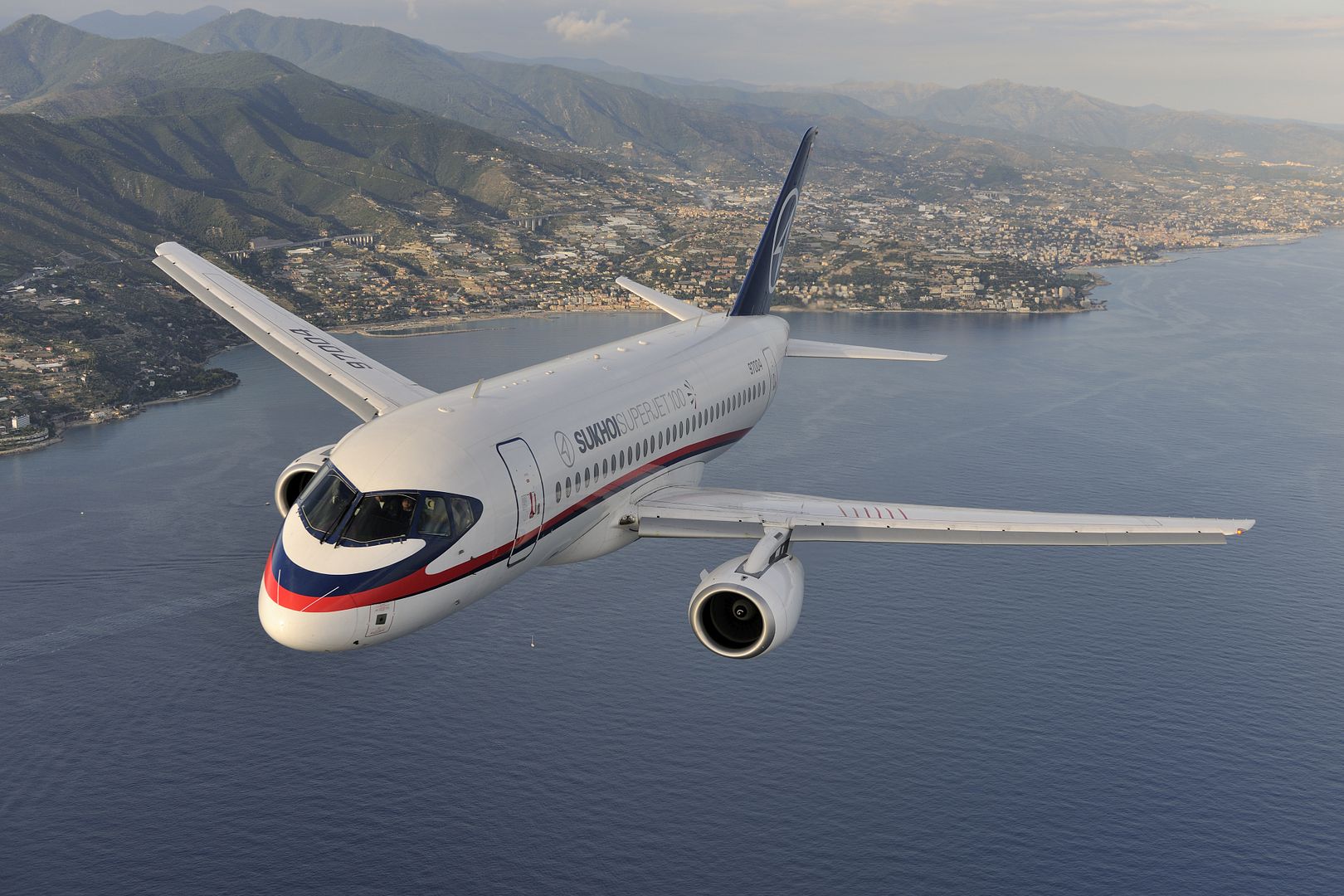
CAPE CANAVERAL, Nov. 12, 2014 ?The Lockheed Martin [NYSE: LMT] built Orion spacecraft has completed its 22-mile, 6-hour journey from the Launch Abort System Facility at Kennedy Space Center, to launch pad 37 at Cape Canaveral Air Force Station, Florida. Orion is now another step closer to its first test flight on Dec. 4, 2014.
?This spacecraft is going to push the boundaries of scientific discovery and human achievement,? said Michael Hawes, Lockheed Martin Orion program manager. ?One day, not too far in the future, an astronaut will leave the first footprints in the red dust of Mars, and we?ll look back and say that journey started here.?
This morning, the 50,000 lb. spacecraft was lifted about 200 feet up and mated to the United Launch Alliance (ULA) Delta IV Heavy rocket, which Lockheed Martin contracted for the flight. Over the next few weeks, the rocket and spacecraft will be integrated and powered up, and engineers will test and verify interfaces between the two in preparation for Exploration Flight Test-1 (EFT-1).
?It has been a tremendous team effort with all of our mission partners to get us to this point just one month prior to launch,? said Jim England, ULA?s EFT-1 program manager. ?We are honored to play such a critical role in this important launch for NASA and are focused on providing mission success so that Orion can complete all of its mission objectives.?
During EFT-1, the uncrewed spacecraft will travel 3,600 miles beyond Earth?15 times further than the International Space Station. That same day, Orion will return to Earth at a speed of approximately 20,000 mph for a splashdown in the Pacific Ocean. EFT-1 will provide engineers with data about systems critical to crew safety, such as heat shield performance, separation events, avionics and software performance, attitude control and guidance, parachute deployment, and recovery operations to validate designs of the spacecraft before it begins carrying humans to new destinations in deep space.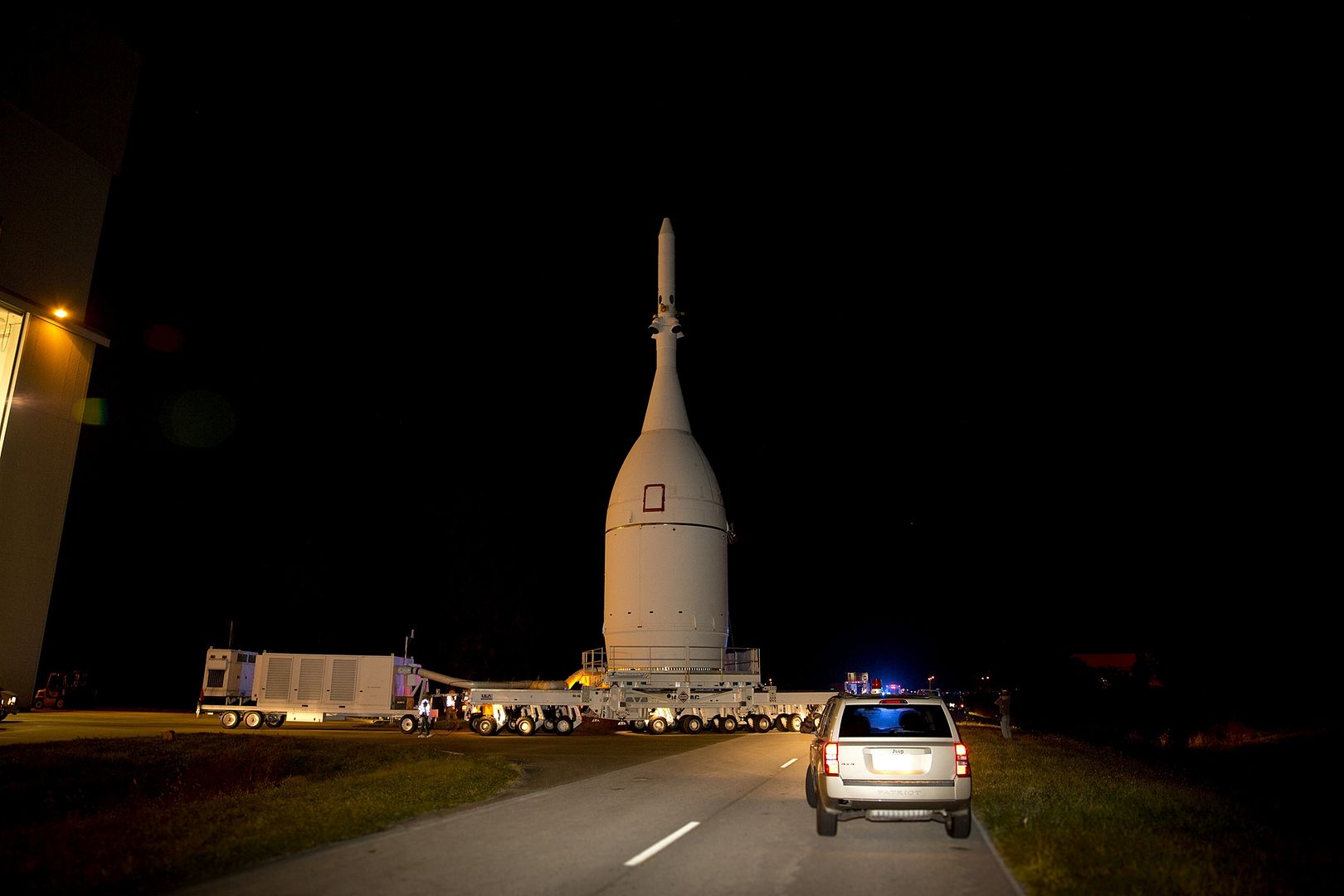
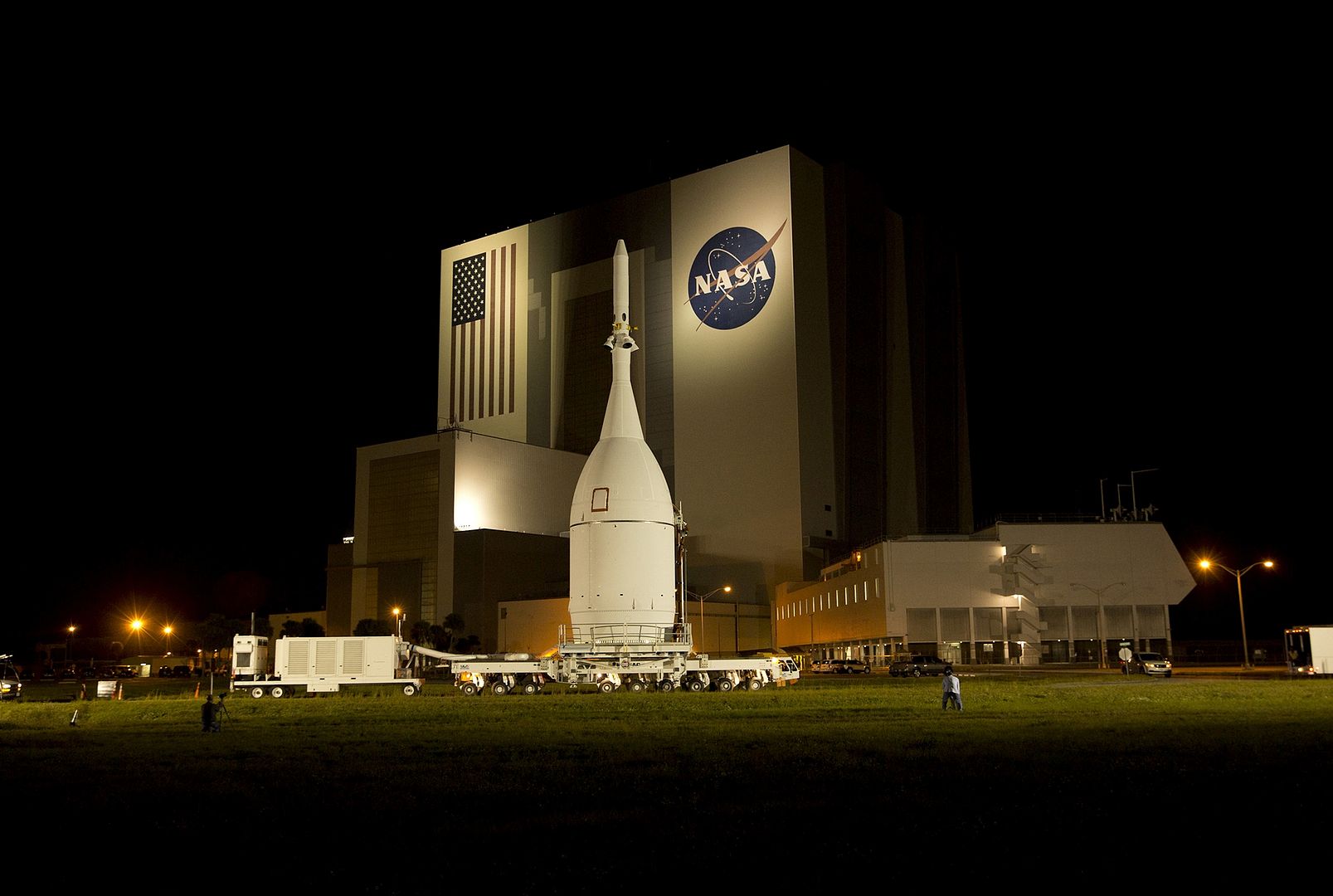
EL SEGUNDO, Calif., Nov. 12, 2014 ? Boeing has successfully mated two 702SP (small platform) satellites in a stacked configuration in preparation for the first-ever conjoined satellite launch. The milestone is a significant step towards the early 2015 launch of the satellites ABS-3A and Eutelsat 115 West B, the first-ever all-electric propulsion satellites scheduled to enter service.
The 702SP, designed by Boeing Network & Space Systems satellite businesses and Phantom Works, features an all-electric propulsion system and a joint configuration for a dual-manifest launch. By eliminating chemical propulsion and using only electric propulsion, the 702SP platform offers a significant mass advantage that translates to increased revenue-generating payload performance and launch vehicle savings to customers.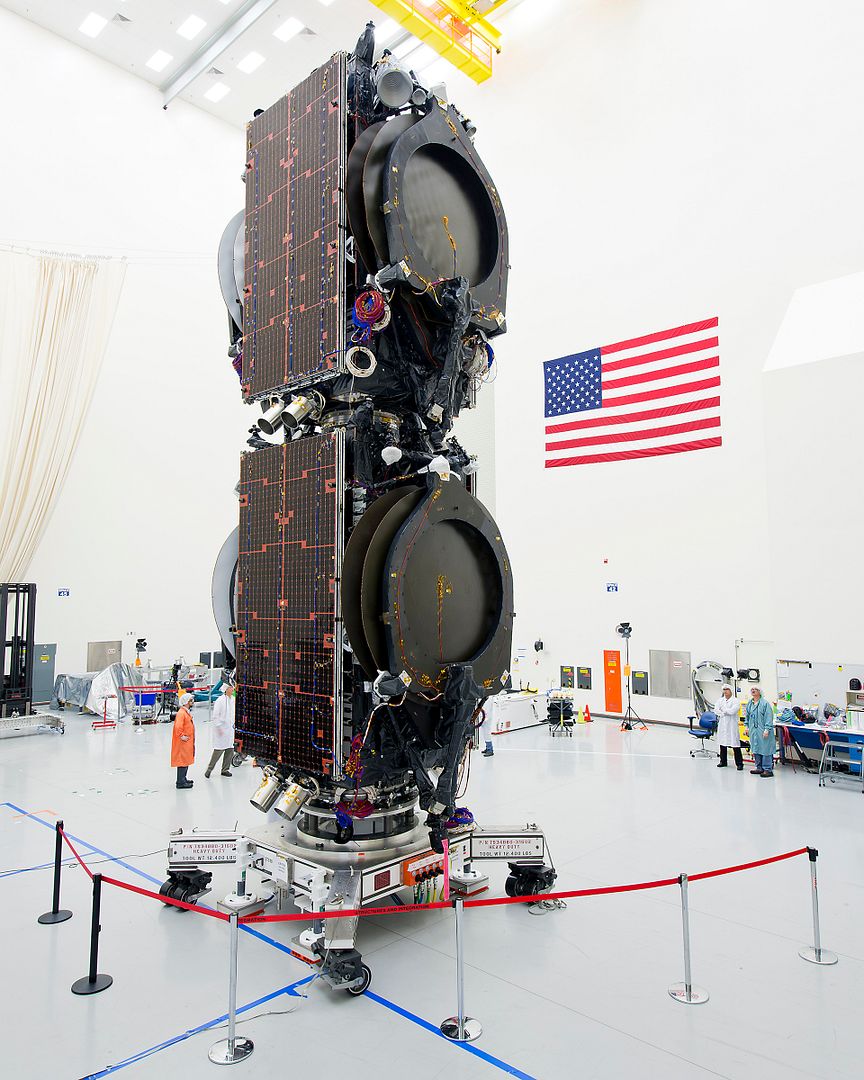
13 November 2014 Press Release
The world?s latest generation commercial airliner, the A350-900, received Type Certification on the 12th November from the US Federal Aviation Administration (FAA) at FAA headquarters in Washington D.C. FAA Associate Administrator for Aviation Safety Peggy Gilligan and Airbus Group Inc. Chairman Allan McArtor were among the signing authorities at the official ceremony. The certified aircraft is powered by Rolls-Royce Trent XWB engines. Today?s milestone follows the A350-900 Type Certification awarded by the European Aviation Safety Agency (EASA) on 30th September.
The A350-900?s respective FAA and EASA certification awards come after Airbus successfully finished a stringent program of certification trials which took the A350-900 airframe and systems well beyond their design limits to ensure all airworthiness criteria are fully met. The fleet of five test A350-900 aircraft completed the certification flight test campaign, on time, having accumulated more than 2,600 flight test hours to create and successfully achieve one of the aviation industry?s most thorough and efficient test programs ever developed for a commercial airliner.
Meanwhile in India
HAL LCH TD3 Indian Stealth Attack Helicopter
-
10 years agoFri Nov 14 2014, 07:37pm
 Main AdminOWEGO, N.Y., Nov. 13, 2014 ? The U.S. Navy received its 200th submarine-hunting MH-60R ?Romeo? helicopter from Lockheed Martin [NYSE: LMT] following a patch signing with Helicopter Maritime Strike Squadron Seven-Two (HSM-72). The cornerstone of the U.S. Navy?s anti-surface and anti-submarine operations, MH-60R helicopters have flown more than 250,000 hours in operation with the Fleet, providing increased surveillance and situational awareness.
Main AdminOWEGO, N.Y., Nov. 13, 2014 ? The U.S. Navy received its 200th submarine-hunting MH-60R ?Romeo? helicopter from Lockheed Martin [NYSE: LMT] following a patch signing with Helicopter Maritime Strike Squadron Seven-Two (HSM-72). The cornerstone of the U.S. Navy?s anti-surface and anti-submarine operations, MH-60R helicopters have flown more than 250,000 hours in operation with the Fleet, providing increased surveillance and situational awareness.
?We are proud to continue supporting the U.S. Navy by delivering a multi-role aircraft with a game-changing sensor suite that shifts the advantage from the submarine to the helicopter,? said Dan Spoor, vice president of Aviation and Unmanned Systems for Lockheed Martin?s Mission Systems and Training business. ?As surface and submarine warfare becomes increasingly complex, the MH-60R?s capabilities are unmatched in identifying, locating, tracking and prosecuting these threats.?
Manufactured by Sikorsky Aircraft Corp and provided with advanced mission systems and sensors by Lockheed Martin, the MH-60R employs a modular design, which refers to the ability to modify weapon systems to match specific mission requirements. The modularity gives this single platform the agility to provide greater surveillance and flexibility to the Fleet, tailored for the mission. Aboard the MH-60R, sensor data is integrated into actionable information for the three-member crew. The mission systems compile data from onboard and offboard sensors to create an integrated picture that enhances decision-making.
Secondary missions include search and rescue, vertical replenishment, naval surface fire support, logistics support, personnel transport, medical evacuation, and very high frequency, ultra high frequency link communication relay.
The U.S. Navy is projected to acquire 291 MH-60R helicopters. The Lockheed Martin-Sikorsky team has also delivered five of 24 aircraft to the Royal Australian Navy and began production for the Royal Danish Navy, which will acquire nine aircraft.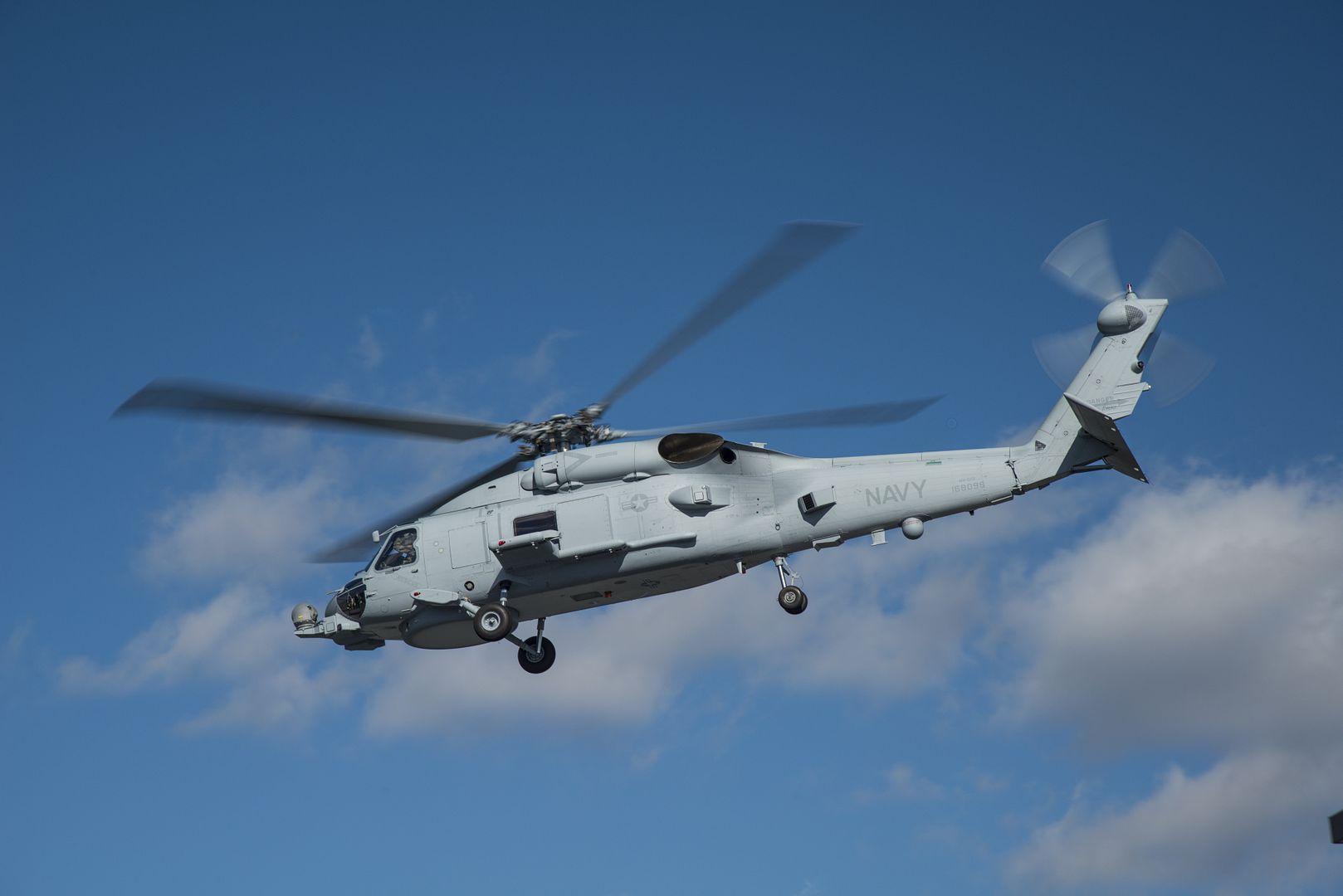
ARABIAN GULF (Nov. 5, 2014) An F/A-18E Super Hornet from the Sunliners of Strike Fighter Squadron (VFA) 81 taxis onto a catapult during night flight operations on the flight deck of the Nimitz-class aircraft carrier USS Carl Vinson (CVN 70). (U.S. Navy photo by Mass Communication Specialist 2nd Class John Philip Wagner, Jr./Released)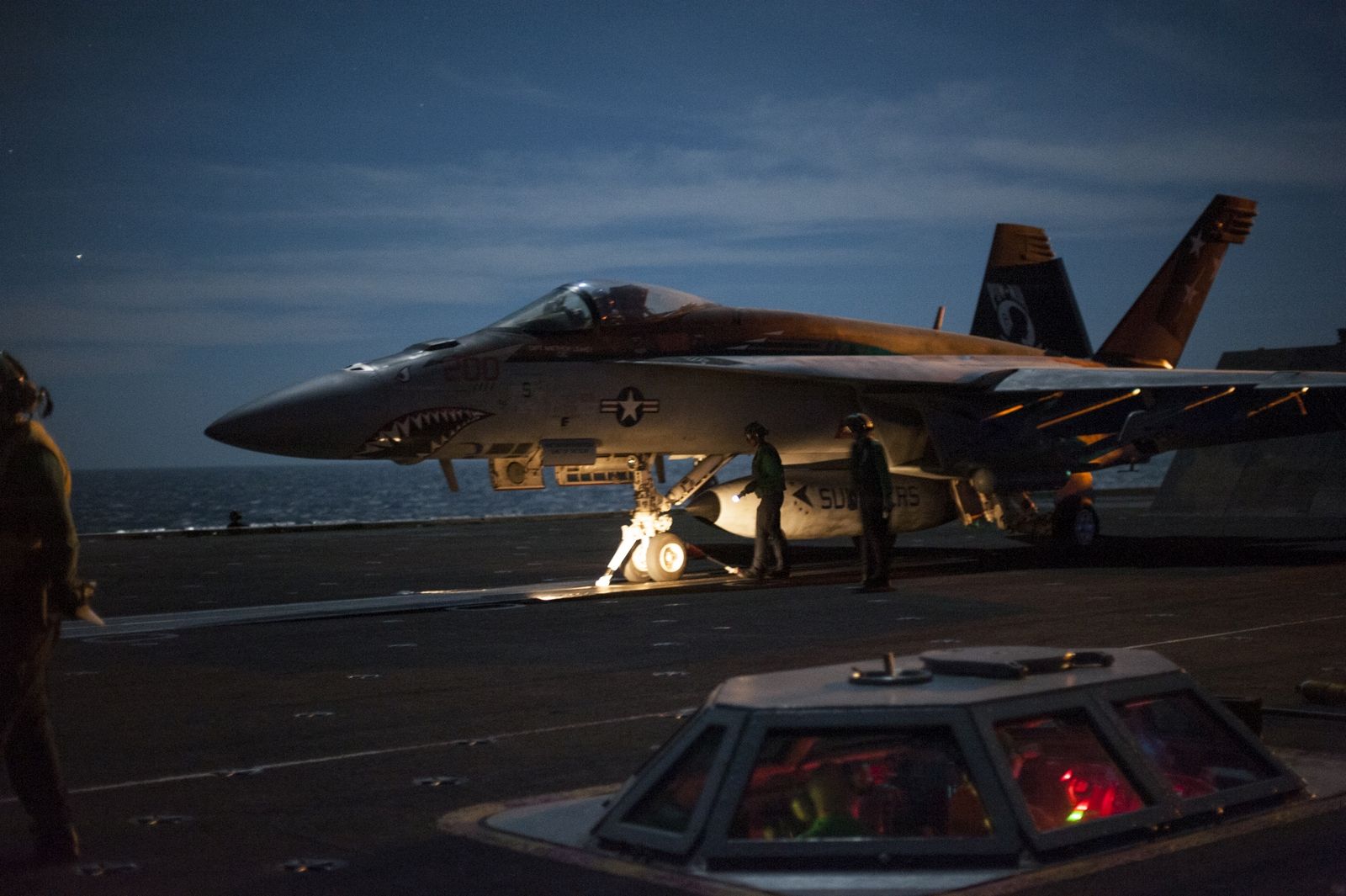
PACIFIC OCEAN (Nov. 12, 2014) An F/A-18E Super Hornet from the Dambusters of Strike Fighter Squadron (VFA) 195 launches from the flight deck of the Nimitz-class aircraft carrier USS George Washington (CVN 73) as part of Keen Sword 2015. Keen Sword, a joint-bilateral training exercise involving the U.S. military and the Japan Self-Defense Forces, is designed to increase combat readiness and interoperability of U.S. forces and the Japan Self-Defense Force. (U.S. Navy photo by Mass Communication Specialist 3rd Class Chris Cavagnaro/Released)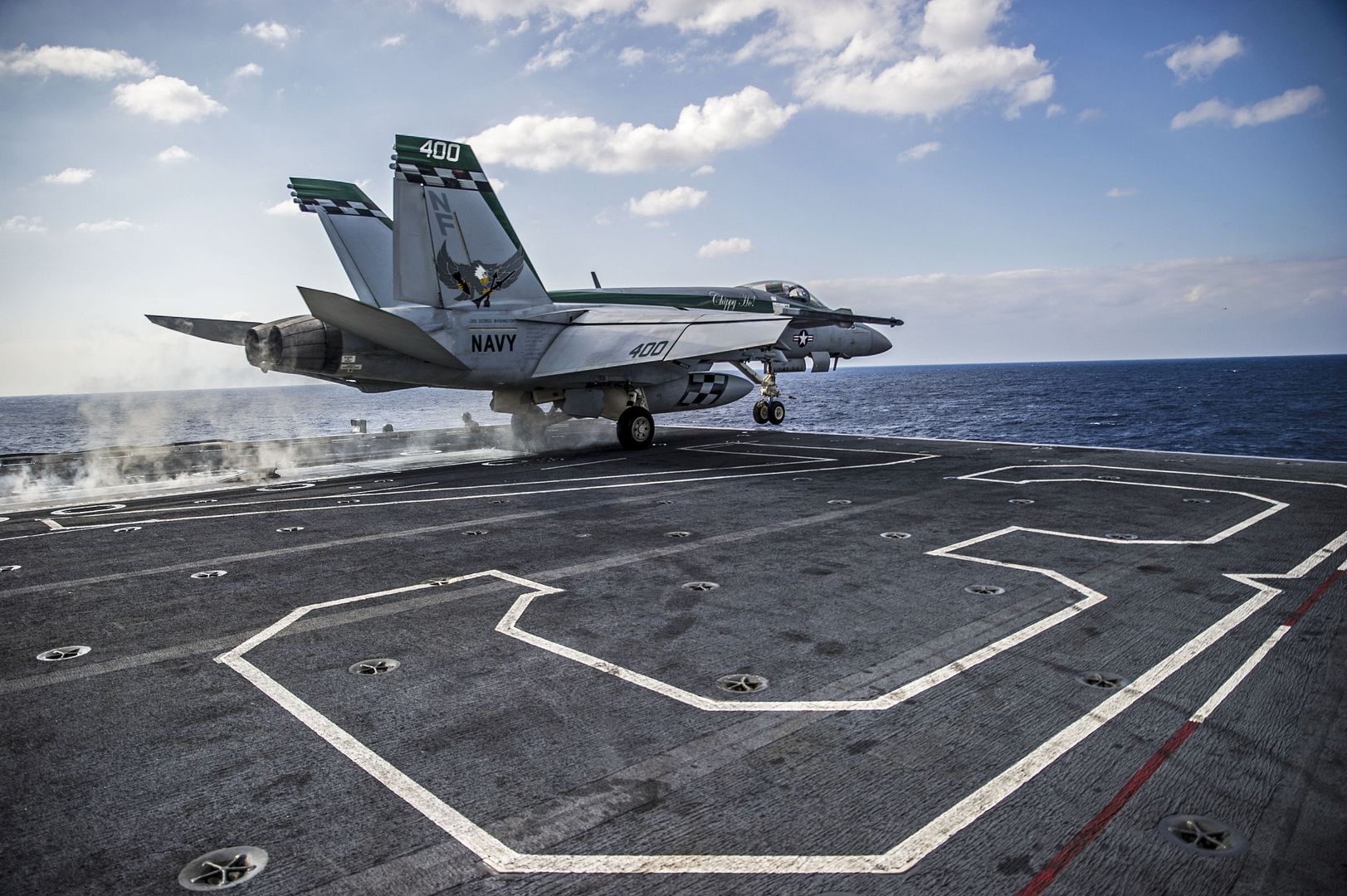
11/12/2014 - An 85th Test and Evaluation Squadron F-15 Eagle lifts off from the Eglin Air Force Base runway for a morning sortie. The 85th TES Airmen fly operational test missions in the F-16 and F-15. The 85th TES is a squadron in the 53rd Wing. (U.S. Air Force photo/Samuel King Jr.)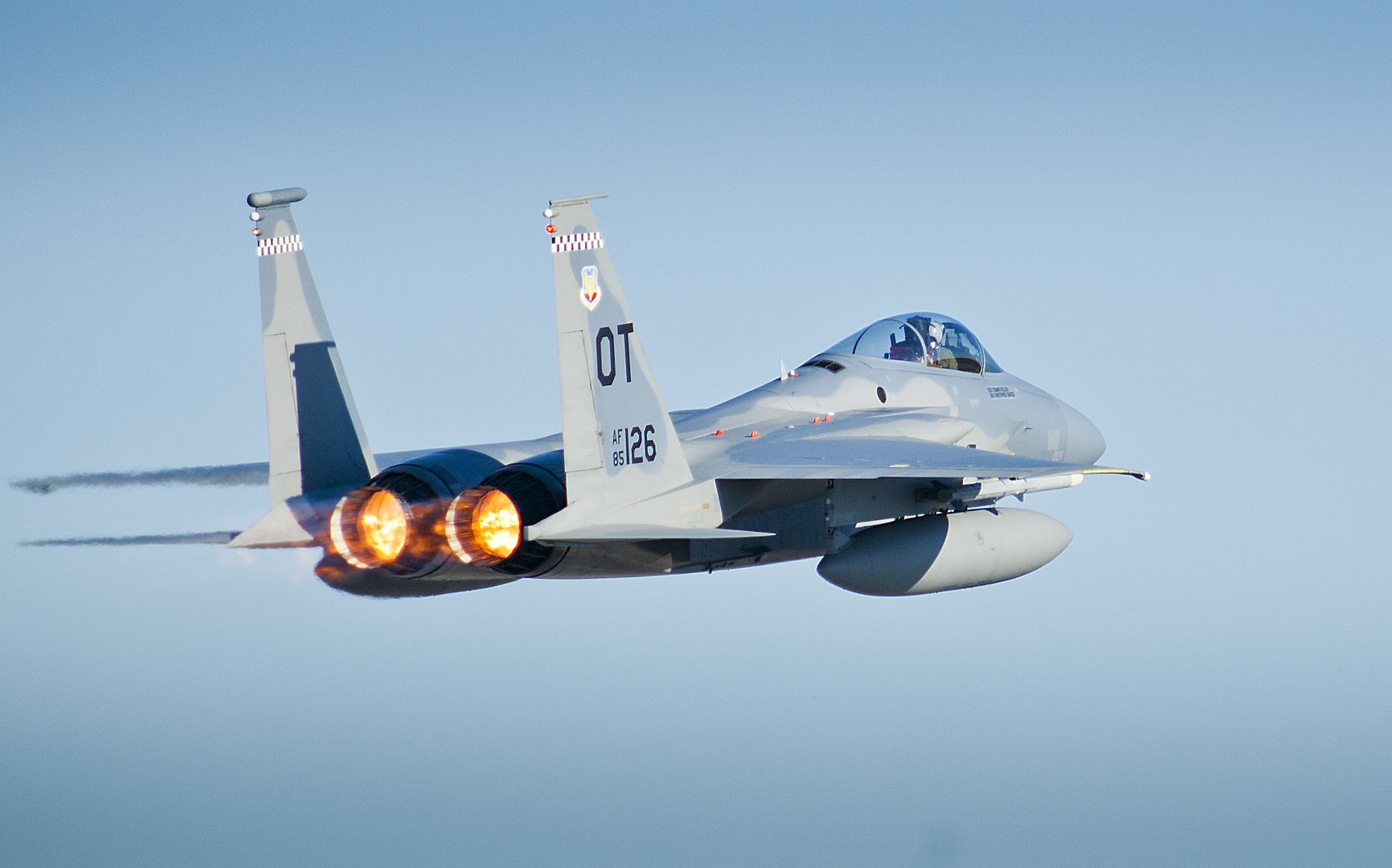
11/12/2014 - An 85th Test and Evaluation Squadron F-16 Fighting Falcon lifts off from the Eglin Air Force Base runway for a morning sortie. The 85th TES Airmen fly operational test missions in the F-16 and F-15. The 85th TES is a squadron in the 53rd Wing. (U.S. Air Force photo/Samuel King Jr.)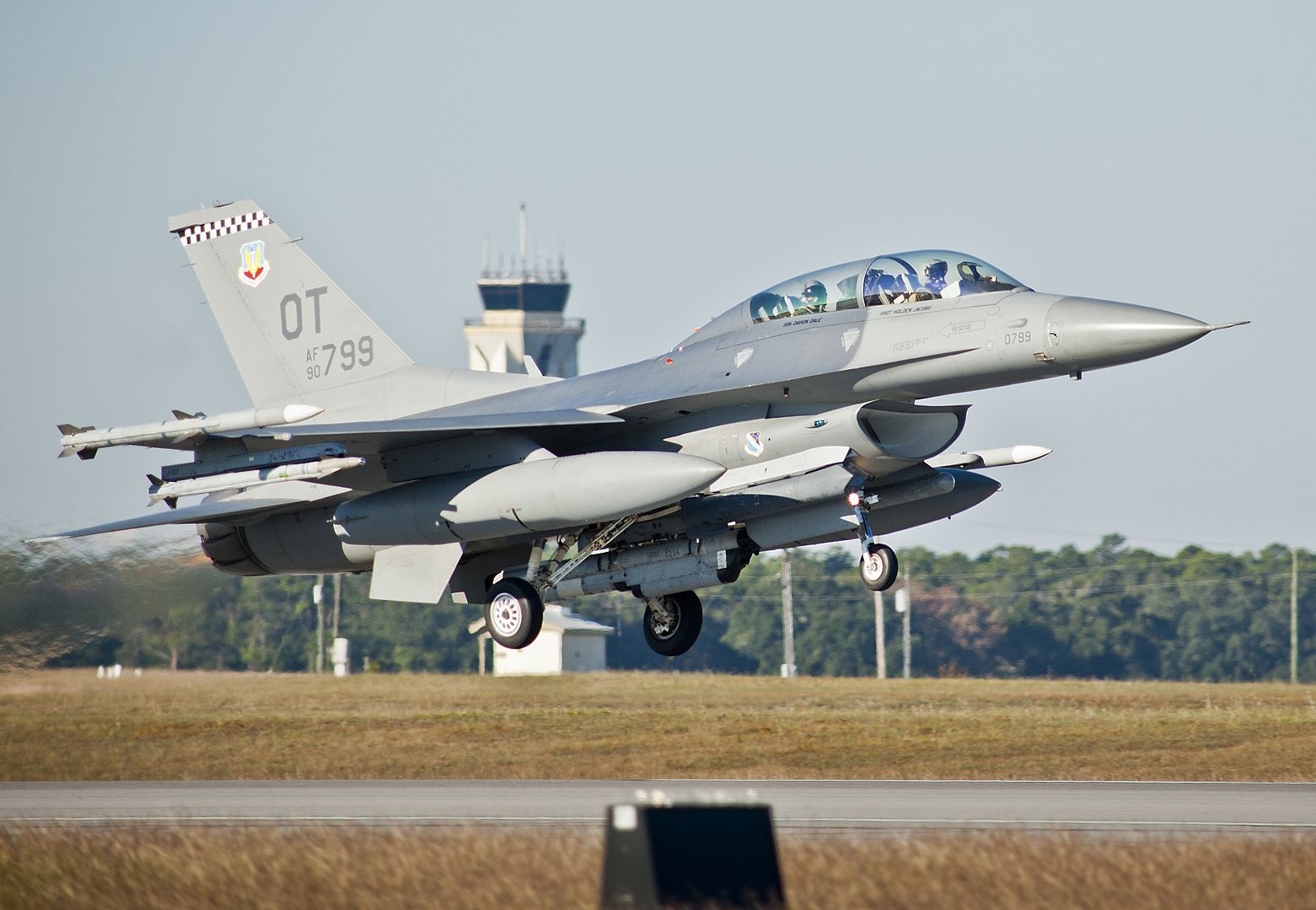
-
10 years ago
 Main Admin17 November 2014 Press Release
Main Admin17 November 2014 Press Release
To industrially accompany the A350 XWB ramp-up and other aircraft production rate increases, Airbus took the decision to launch the development and production of five new Belugas.
The new Beluga will be based on the A330 with a large re-use of existing components and equipment. The distinctive looking lowered cockpit, the cargo bay structure and the rear-end and tail will be amongst the items which will be newly developed.
The first of the five new Belugas will enter in service in mid-2019. The existing Beluga fleet will operate in parallel, and will be progressively retired through to 2025.
The current Beluga fleet of five aircraft is based on the A300. The "Beluga", is Airbus? unique method for transporting large aircraft components? between company production sites in Europe. Airbus had already l launched ?the Fly 10000? project aiming at doubling the current Beluga capacity by 2017. However the current capacity is limited and the new Beluga fleet will close this capacity gap.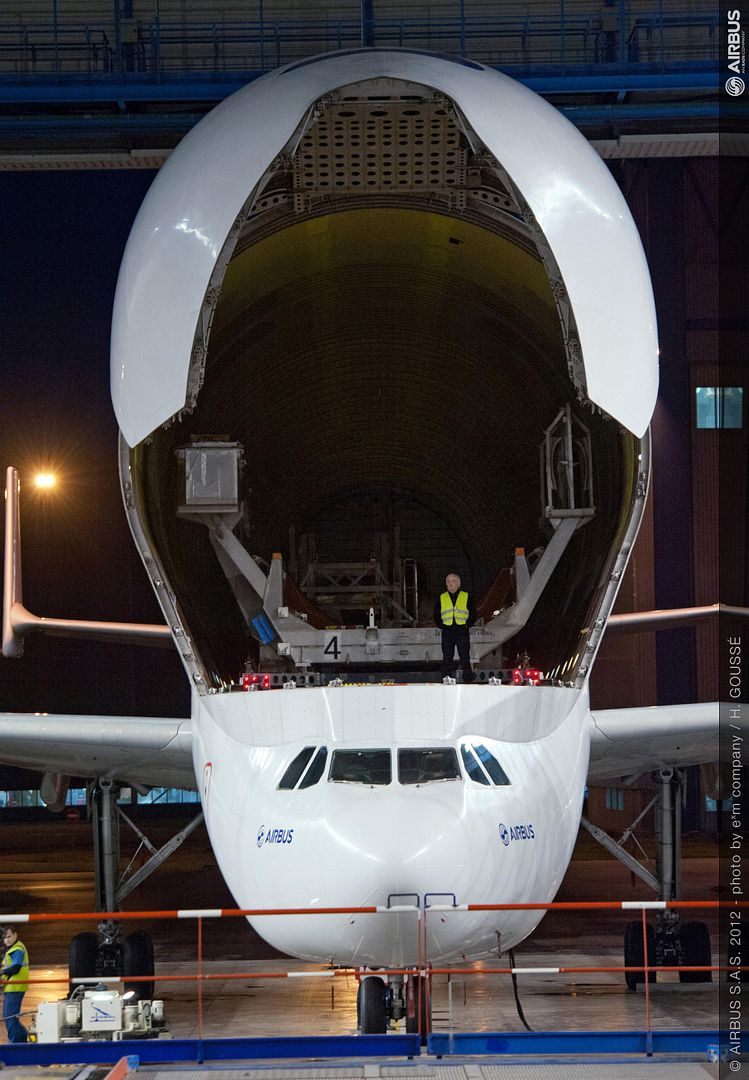
-
10 years ago
 Main AdminSEATTLE, Nov. 17, 2014 ? The Boeing [NYSE: BA] ecoDemonstrator 787 has begun flight testing more than 25 new technologies aimed at improving aviation?s environmental performance through every phase of flight.
Main AdminSEATTLE, Nov. 17, 2014 ? The Boeing [NYSE: BA] ecoDemonstrator 787 has begun flight testing more than 25 new technologies aimed at improving aviation?s environmental performance through every phase of flight.
The Boeing ecoDemonstrator Program accelerates the testing, refinement and use of new technologies and methods that can improve efficiency and reduce noise. This new round of testing, using 787 Dreamliner ZA004, will evaluate software and connectivity technologies related to operational efficiency; remote sensors to reduce wiring; aerodynamic and flight control improvements for greater fuel efficiency, and icephobic wing coatings to reduce ice accumulation.
The airplane is seen here taking off from Boeing Field in Seattle.
F-22 Raptors from the 94th Fighter Squadron, Joint Base Langley-Eustis, Virginia, and F-35A Lightning IIs from the 58th Fighter Squadron, Eglin Air Force Base, Florida, fly in formation after completing an integration training mission over the Eglin Training Range, Florida, Nov. 5, 2014. The purpose of the training was to improve integrated employment of fifth-generation assets and tactics. The F-35s and F-22s flew offensive counter air, defensive counter air and interdiction missions, maximizing effects by employing fifth-generation capabilities together. (U.S. Air Force photo/Master Sgt. Shane A. Cuomo)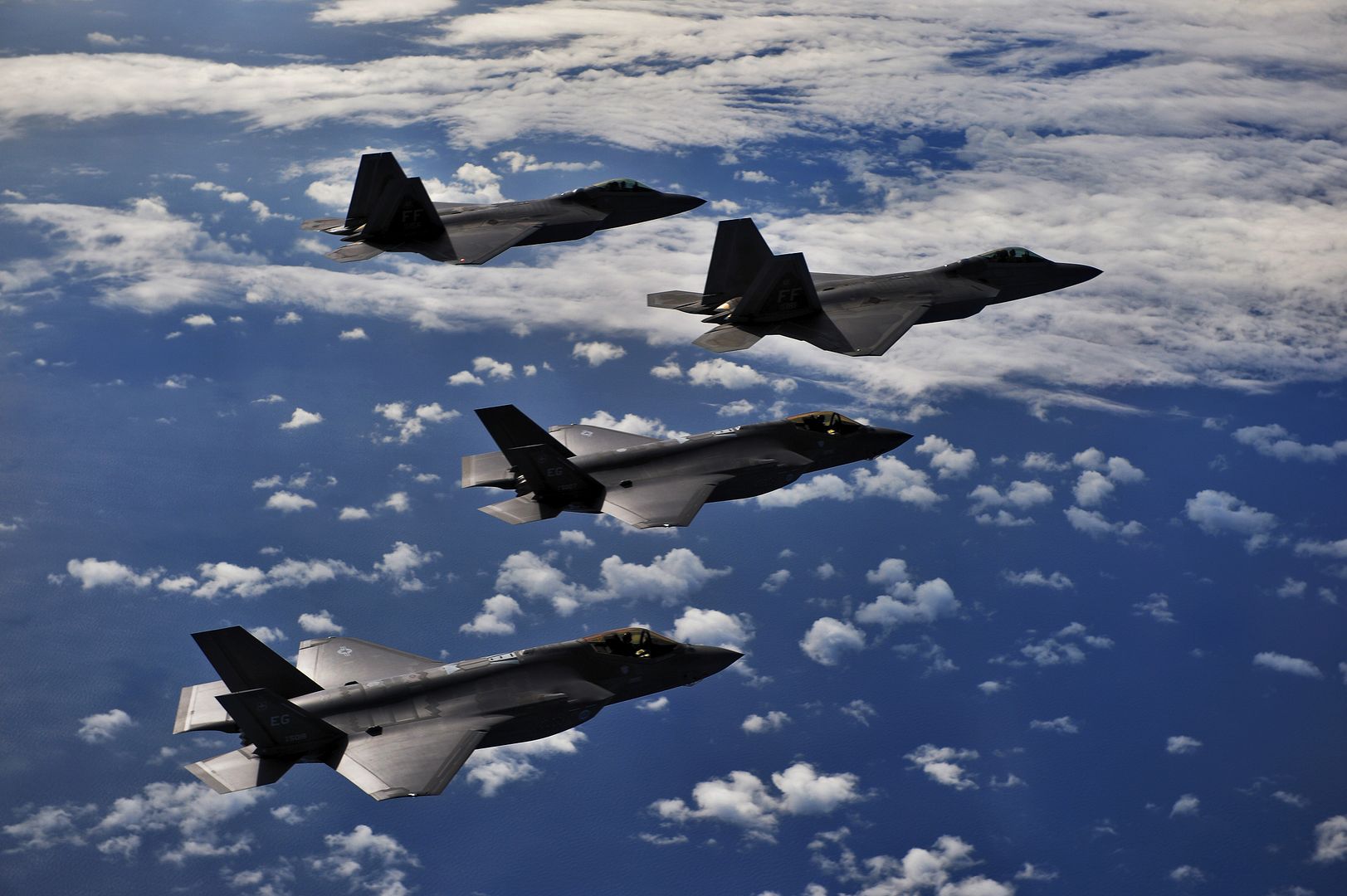

-
10 years ago
 Main AdminKUNSAN, Republic of Korea (Nov. 17, 2014) A Marine from Fleet Antiterrorism Security Team Pacific (FASTPAC) stands watch for Electronic Attack Squadron (VAQ) 138 at Kunsan Air Base in the Republic of Korea. VAQ-138 is in Kunsan participating in Max Thunder, an exercise that integrates U.S. and Republic of Korea forces to train for air-to-air and air-to-ground missions to ensure mutual understanding and cooperation between the two nations. (U.S. Navy photo by Mass Communication Specialist 1st Class Frank L. Andrews/Released)
Main AdminKUNSAN, Republic of Korea (Nov. 17, 2014) A Marine from Fleet Antiterrorism Security Team Pacific (FASTPAC) stands watch for Electronic Attack Squadron (VAQ) 138 at Kunsan Air Base in the Republic of Korea. VAQ-138 is in Kunsan participating in Max Thunder, an exercise that integrates U.S. and Republic of Korea forces to train for air-to-air and air-to-ground missions to ensure mutual understanding and cooperation between the two nations. (U.S. Navy photo by Mass Communication Specialist 1st Class Frank L. Andrews/Released)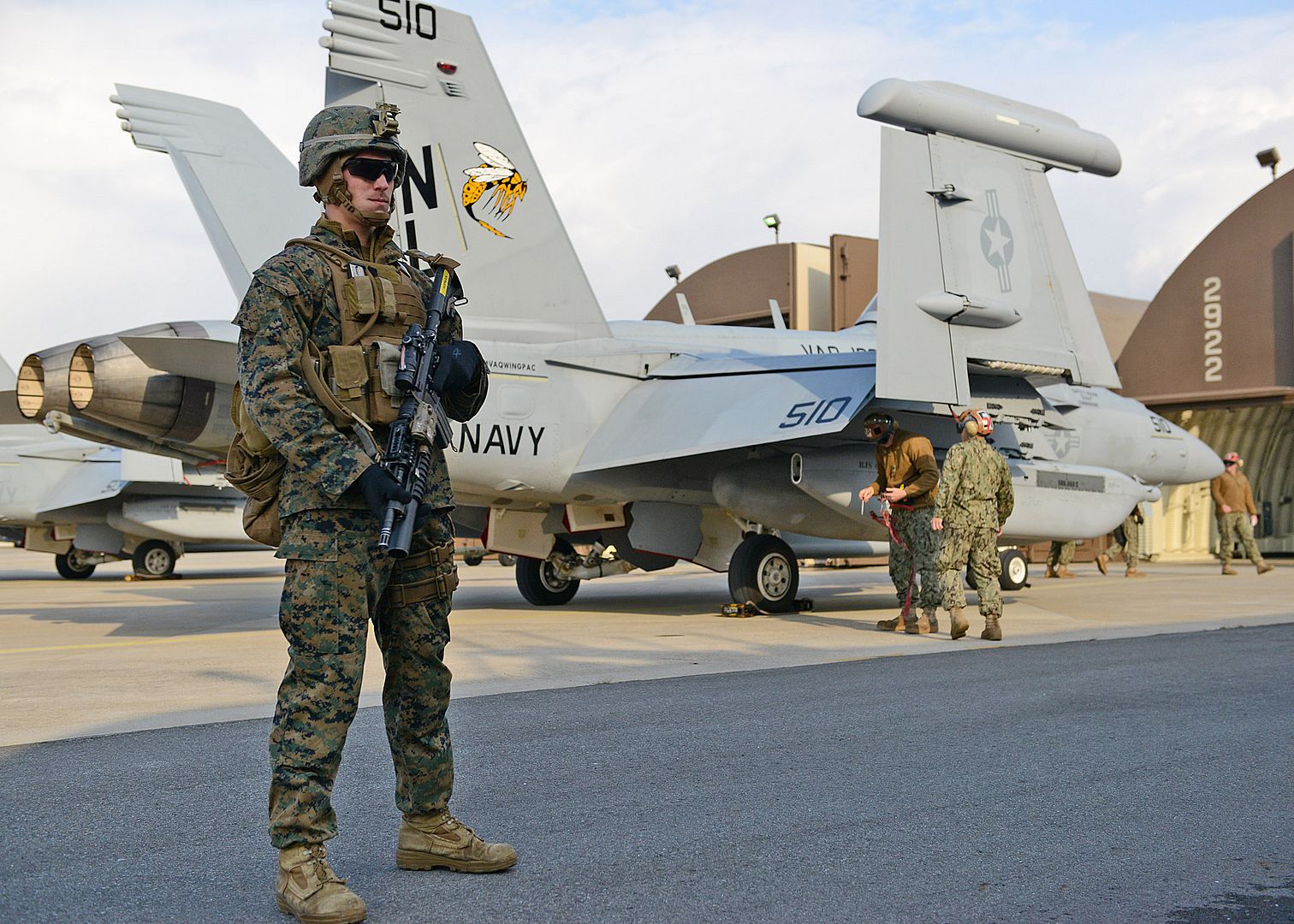
-
10 years ago
 Main AdminCrew chiefs from the 34th Aircraft Maintenance Unit, Ellsworth Air Force Base, S.D., perform pre-flight inspection on a B-1B Lancer assigned to the 34th Bomb Squadron, Ellsworth AFB, during Green Flag-West 15-02 at Nellis AFB, Nev., Nov. 18, 2014. Typical Green Flag exercises involve multi-role fighters and/or bomber squadrons, unmanned aircraft, electronic warfare aircraft, and aerial refueling aircraft at the U.S. Army National Training Center, Fort Irwin, Calif. (U.S. Air Force photo by Staff Sgt. Siuta B. Ika)
Main AdminCrew chiefs from the 34th Aircraft Maintenance Unit, Ellsworth Air Force Base, S.D., perform pre-flight inspection on a B-1B Lancer assigned to the 34th Bomb Squadron, Ellsworth AFB, during Green Flag-West 15-02 at Nellis AFB, Nev., Nov. 18, 2014. Typical Green Flag exercises involve multi-role fighters and/or bomber squadrons, unmanned aircraft, electronic warfare aircraft, and aerial refueling aircraft at the U.S. Army National Training Center, Fort Irwin, Calif. (U.S. Air Force photo by Staff Sgt. Siuta B. Ika)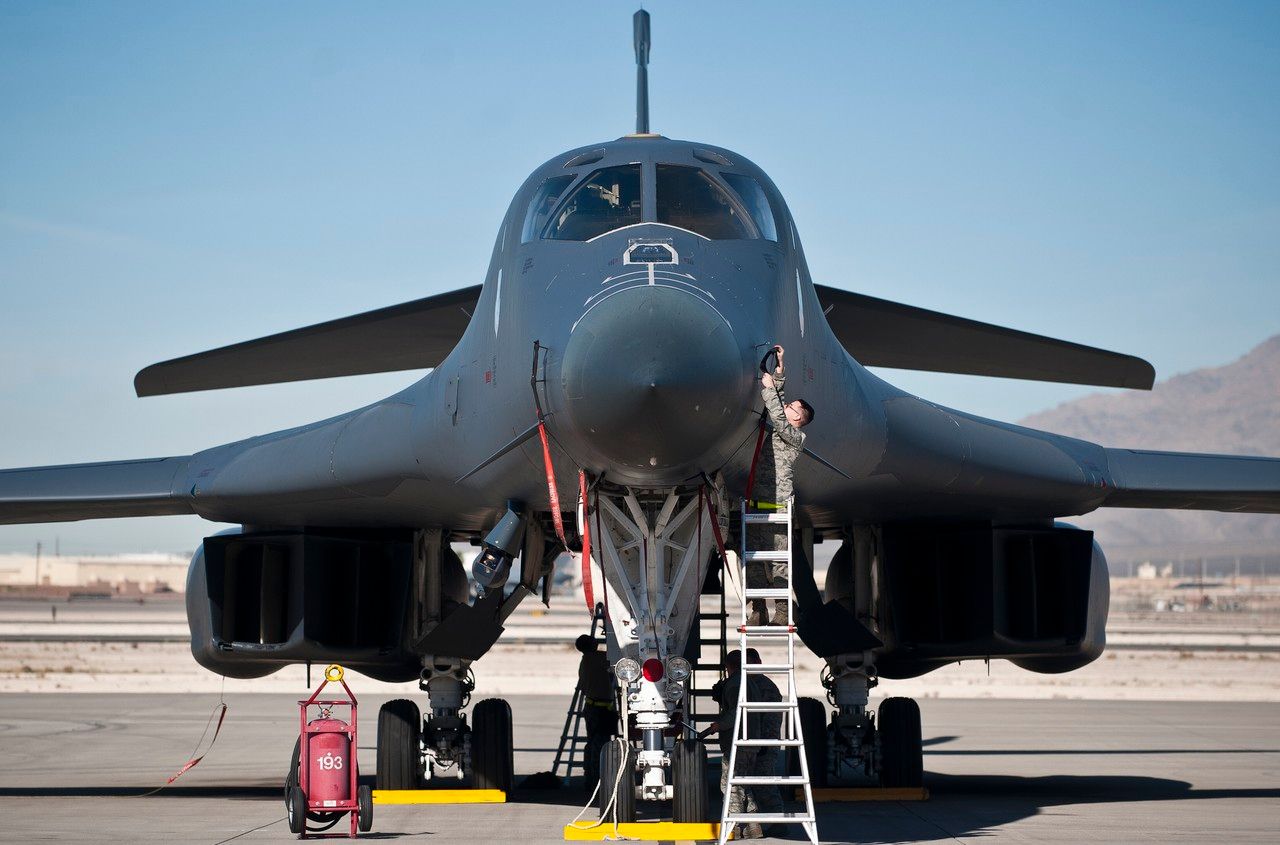
A B-1B Lancer assigned to the 34th Bomb Squadron, Ellsworth Air Force Base, S.D., disengages after being refueled by a KC-135 Stratotanker assigned to the 93rd Air Refueling Squadron, Fairchild AFB, Wash., during a Green Flag-West 15-02 training sortie over the Southern California desert, Nov. 18, 2014. In-flight refueling is a critical tool in maintaining air superiority around the globe. (U.S. Air Force photo by Airman 1st Class Joshua Kleinholz)
An F/A-18E Super Hornet from the "Dambusters" of Strike Fighter Squadron (VFA) 195 makes an arrested landing on the flight deck of the Nimitz-class aircraft carrier USS George Washington (CVN 73). George Washington and its embarked air wing, Carrier Air Wing (CVW) 5, provide a combat-ready force that protects and defends the collective maritime interests of the U.S. and its allies and partners in the Indo-Asia-Pacific region. (U.S. Navy photo by Mass Communication Specialist 3rd Class Beverly J. Lesonik/Released)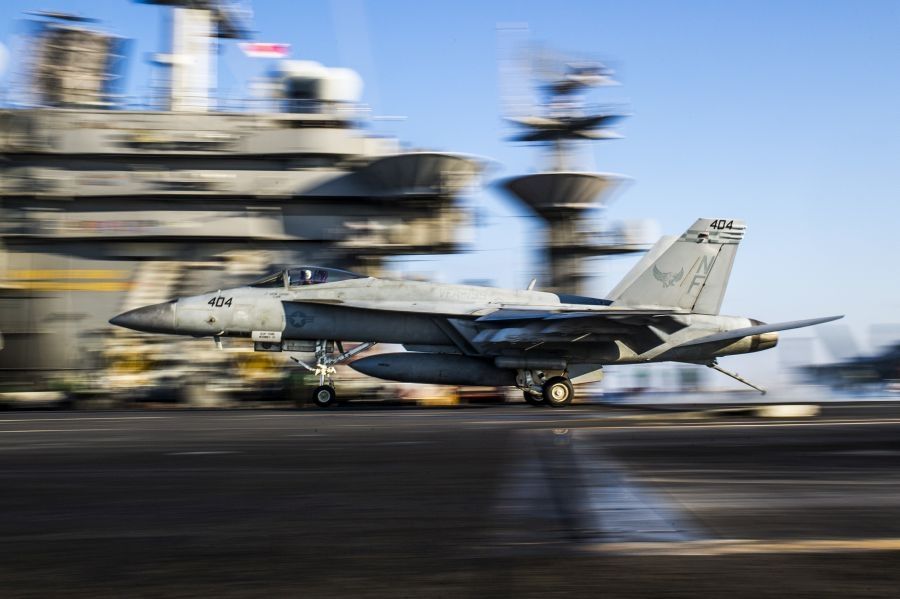
U.S. Navy MH-60S Knighthawk from the Helicopter Sea Combat Squadron 4 Black Knights, lands at a military training range in Southern Arizona, Nov 14, 2014. HSC-4 was detached to Davis-Monthan Air Force Base, Ariz., conducting joint operations training with A-10C Thunderbolt II squadrons and Combat Search and Rescue units. (U.S. Air Force Photo by Airman 1st Class Chris Massey/Released)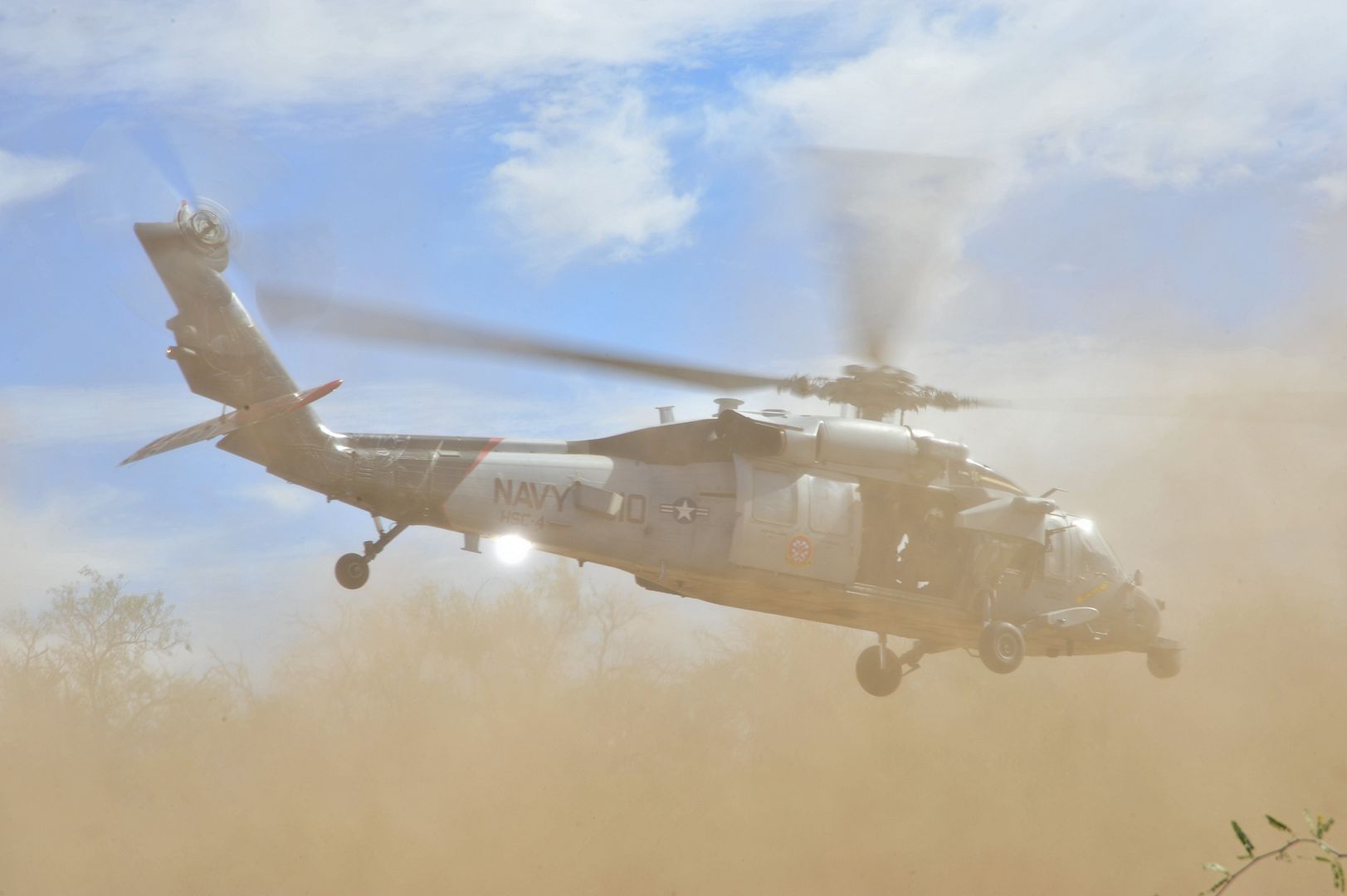
-
10 years ago
 Main AdminDuxford Thursday 20/11/14.
Main AdminDuxford Thursday 20/11/14.
First flight of the long awaited (third) restoration.
And she looks fantastic.
Photo courtesy of AJCDuxman link - https://www.flickr.com/photos/64209520@N05/
Thanks
-
10 years agoFri Nov 21 2014, 03:06pm
 Main AdminThe United Kingdom and partner nations Germany, Italy and Spain have signed a ?830 million pound contract to provide the Typhoon with the new CAPTOR-E AESA radar. The deal was announced following a meeting of partner nation representatives in Edinburgh on the 19th of November. The four nation-backed Typhoon is produced by BAE Systems, Airbus Group and Alenia Aermacchi. BAE Systems said its share of the deal to develop the Captor E-Scan radar for the jet fighter was worth ?365m. The deal secures 500 jobs at Selex ES in Edinburgh, Scotland, UK.
Main AdminThe United Kingdom and partner nations Germany, Italy and Spain have signed a ?830 million pound contract to provide the Typhoon with the new CAPTOR-E AESA radar. The deal was announced following a meeting of partner nation representatives in Edinburgh on the 19th of November. The four nation-backed Typhoon is produced by BAE Systems, Airbus Group and Alenia Aermacchi. BAE Systems said its share of the deal to develop the Captor E-Scan radar for the jet fighter was worth ?365m. The deal secures 500 jobs at Selex ES in Edinburgh, Scotland, UK.
20 November 2014 Press Release
Delta Air Lines has placed a firm order for 50 new Airbus widebody aircraft, 25 A350-900 and 25 A330-900neo aircraft. Rolls-Royce Trent 7000 engines will power the Airbus A330neo aircraft and Trent XWB engines will power Airbus A350 XWB aircraft.
?When the most successful U.S. airline today ? a company that has flown passengers around the world for more than 80 years, has 80-thousand employees and 165 million customers in a year ? says ?yes we want 50 more of your widebody planes?, you can?t debate the fact that it is a massive endorsement of your product line,? said John Leahy, Airbus? Chief Operating Officer ? Customers. ?Airbus is unique in offering an optimized long-range choice in aircraft that will allow Delta to continue to modernize its fleet and customize its use with the most efficient and comfortable aircraft available.?
Delta Air Lines currently flies both Airbus single-aisle and widebody aircraft, including 57 A319ceo and 69 A320ceo aircraft, plus 11 A330-200s and 21 A330-300s. In addition to the order announced today, Delta has an order backlog of 10 A330-300s and 45 A321ceo aircraft, bringing its total Airbus backlog to 105 aircraft.
The A350 XWB is the latest addition to the market-leading Airbus widebody product line. Offering its customers a 25 percent reduction in fuel-burn, the all-new mid-size long-range A350 XWB Family aircraft can seat up to 369 passengers in a typical two-class layout. The A350 has a carbon fibre fuselage and wings and sets new standards in terms of passenger experience, operational efficiency and cost-effectiveness. At the end of October 2014, the A350 XWB had won 750 orders from 39 customers worldwide.
The A330 Family has now attracted more than 1,300 orders. Over 1,100 A330 Family aircraft are flying with more than 100 operators worldwide. The A330 is one of the world?s most efficient aircraft with best in class operating economics. Airbus has committed to continuously improving the program since the A330?s service entry. The company spends approximately 150 million euros each year on enhancements and incremental improvements for the A330 jetliner family. The newest evolution is Airbus? A330neo, which builds on the A330?s proven economics, versatility and reliability while reducing fuel consumption by a further 14 percent per seat. Comprised of two versions ? the A330-800neo and the A330-900neo ? this aircraft incorporates latest-generation Rolls-Royce Trent 7000 engines with 112-inch diameter fan for a 10:1 bypass ratio, more seats and new cabin features.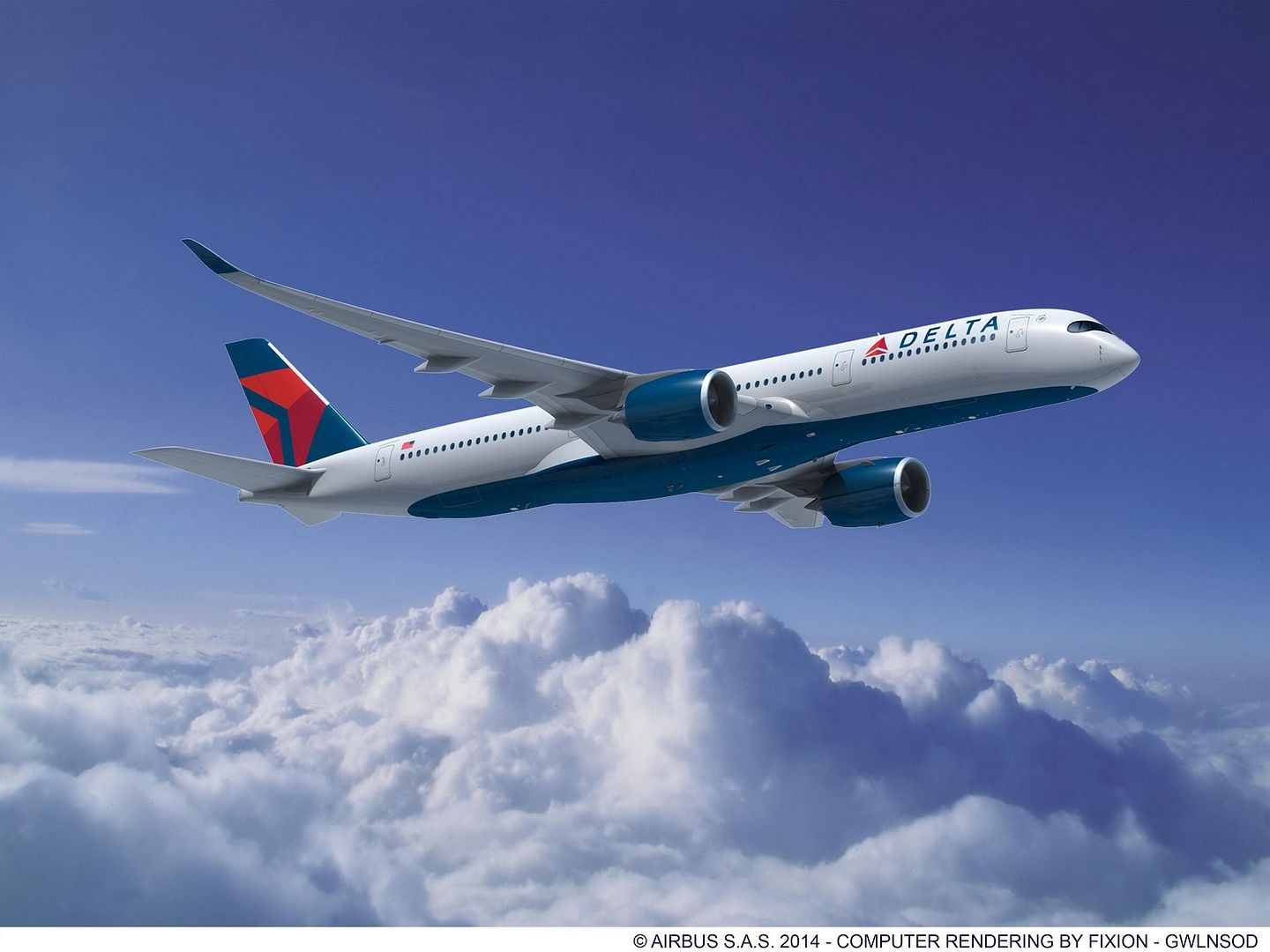
-
 Main Admin
Main Admin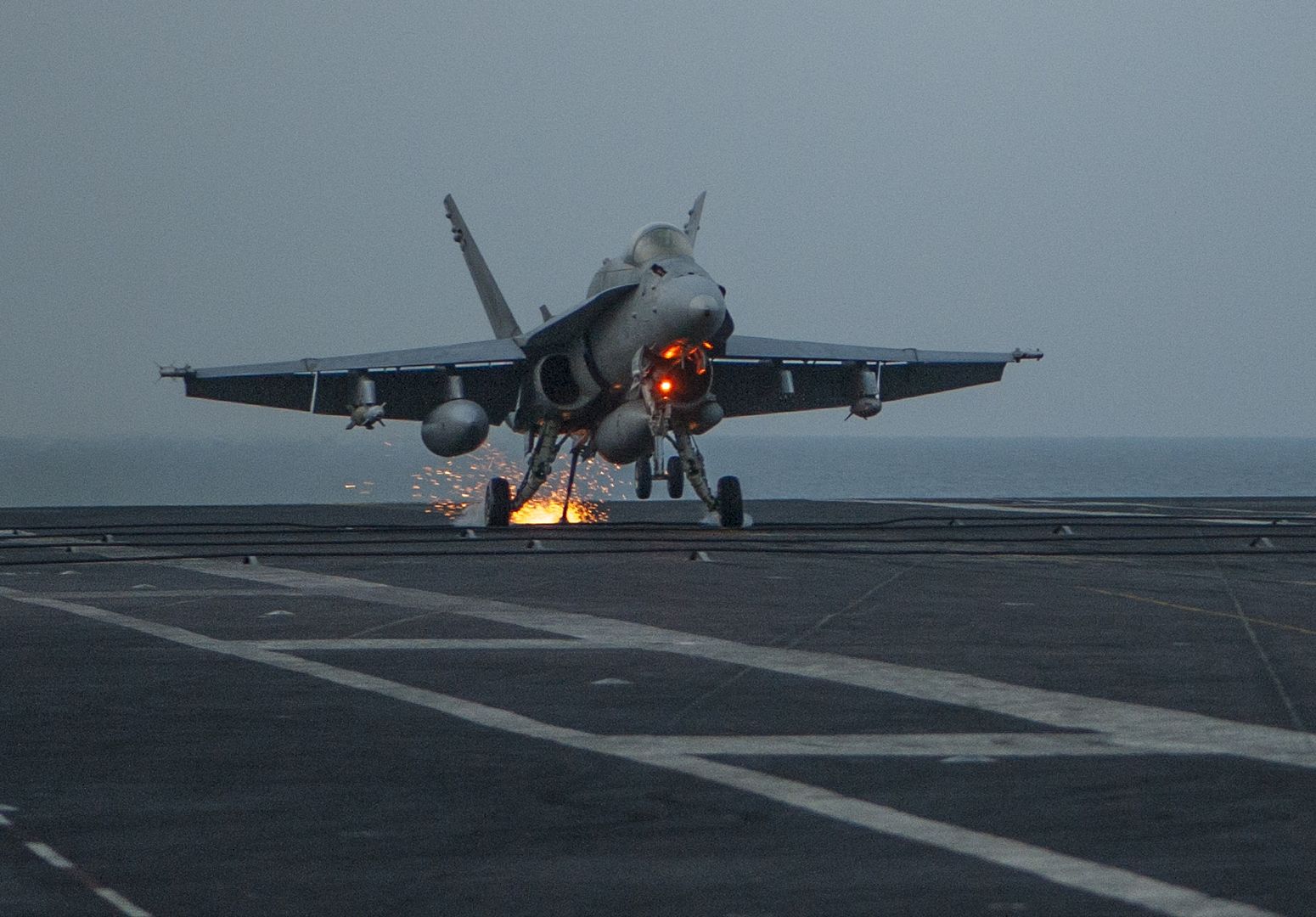
ARABIAN GULF (Nov. 22, 2014) An F/A-18C Hornet from the Stingers of Strike Fighter Squadron (VFA) 113 makes an arrested recovery on the flight deck of the Nimitz-class aircraft carrier USS Carl Vinson (CVN 70) as the ship conducts flight operations in the U.S. 5th Fleet area of responsibility supporting Operation Inherent Resolve. The Carl Vinson Carrier Strike Group is deployed to the area supporting maritime security operations, strike operations in Iraq and Syria as directed, and theater security cooperation efforts in the U.S. 5th Fleet area of responsibility. (U.S. Navy photo by Mass Communication Specialist 2nd Class John Philip Wagner Jr./Released)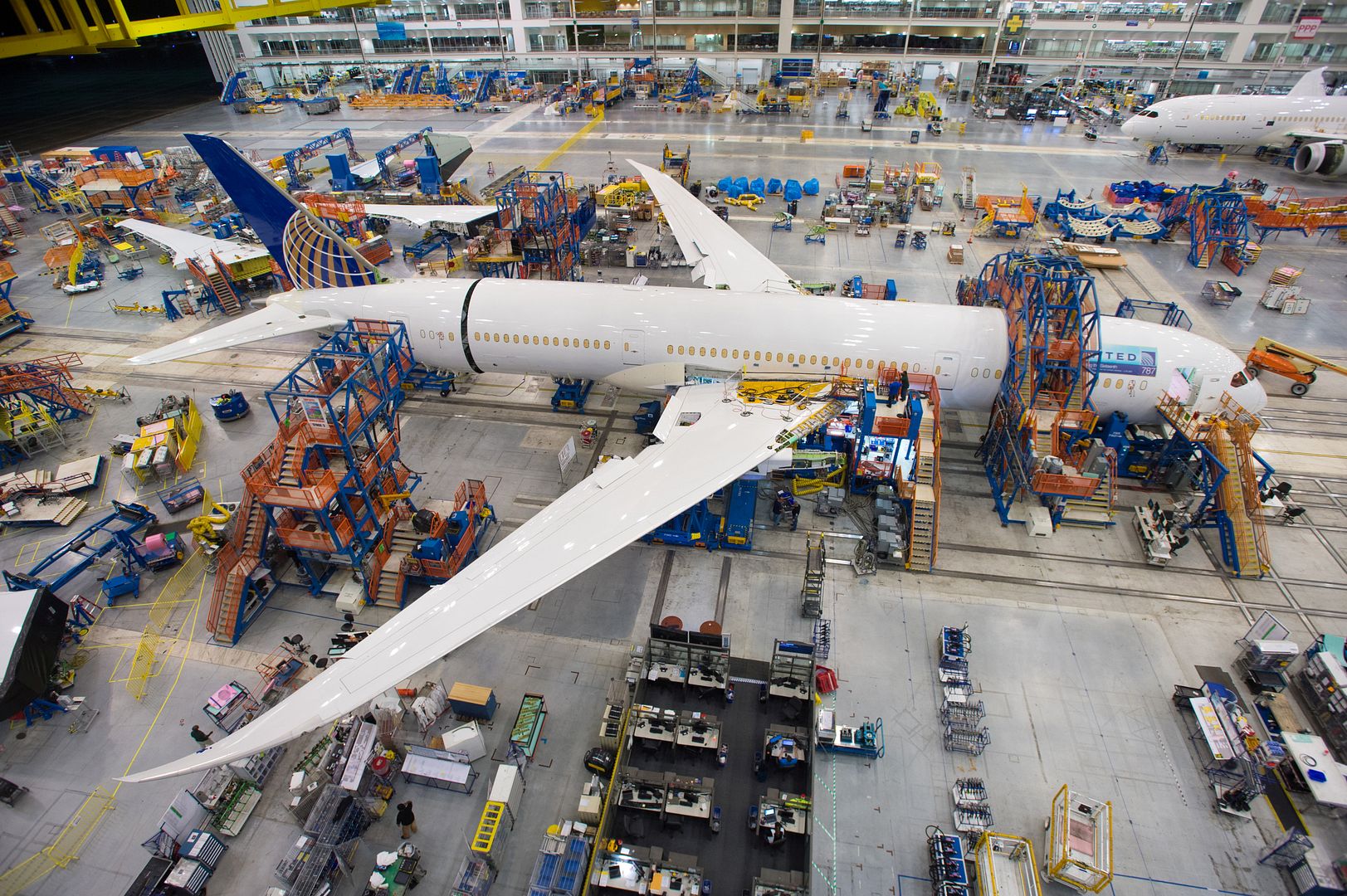
NORTH CHARLESTON, S.C., Nov. 24, 2014 /PRNewswire/ -- Boeing (NYSE: BA) has started final assembly of the 787-9 Dreamliner at its South Carolina facility. The team began joining large fuselage sections of the newest 787 Nov. 22 on schedule, a proud milestone for the South Carolina team and another sign of stability for the program.
The North Charleston, S.C., site joins Boeing's Everett, Wash., final assembly, which began 787-9 production in May 2013. United Airlines will take delivery of the first South Carolina-built 787-9.
"Our team is well prepared and eager to assemble the 787-9 Dreamliner," said Jack Jones, vice president and general manager of Boeing South Carolina. "Achieving this significant milestone in our final assembly operations demonstrates that we're performing well here at Boeing South Carolina. We're looking forward to delivering our first South Carolina-built 787-9 to United Airlines, and delivering 787-9s as well as 787-8s to all our customers."
The 787-9 complements and extends the 787 family, offering airlines the ability to grow routes opened with the 787-8. With the fuselage stretched by 20 feet (6 meters), the 787-9 can fly up to 40 more passengers an additional 450 nautical miles (830 kilometers) with the same exceptional environmental performance ? 20 percent less fuel use and 20 percent fewer emissions than the airplanes it replaces. The 787-9 leverages the visionary design of the 787-8, offering passenger-pleasing features such as large, dimmable windows, large stow bins, modern LED lighting, higher humidity, a lower cabin altitude, cleaner air and a smoother ride.
-
 Main AdminSEATTLE, Nov. 25, 2014 ? Boeing [NYSE: BA] delivered the sixth P-8I maritime patrol aircraft to India, on schedule, on Nov. 24, arriving at Naval Air Station Rajali to join five others being used by the Indian Navy.
Main AdminSEATTLE, Nov. 25, 2014 ? Boeing [NYSE: BA] delivered the sixth P-8I maritime patrol aircraft to India, on schedule, on Nov. 24, arriving at Naval Air Station Rajali to join five others being used by the Indian Navy.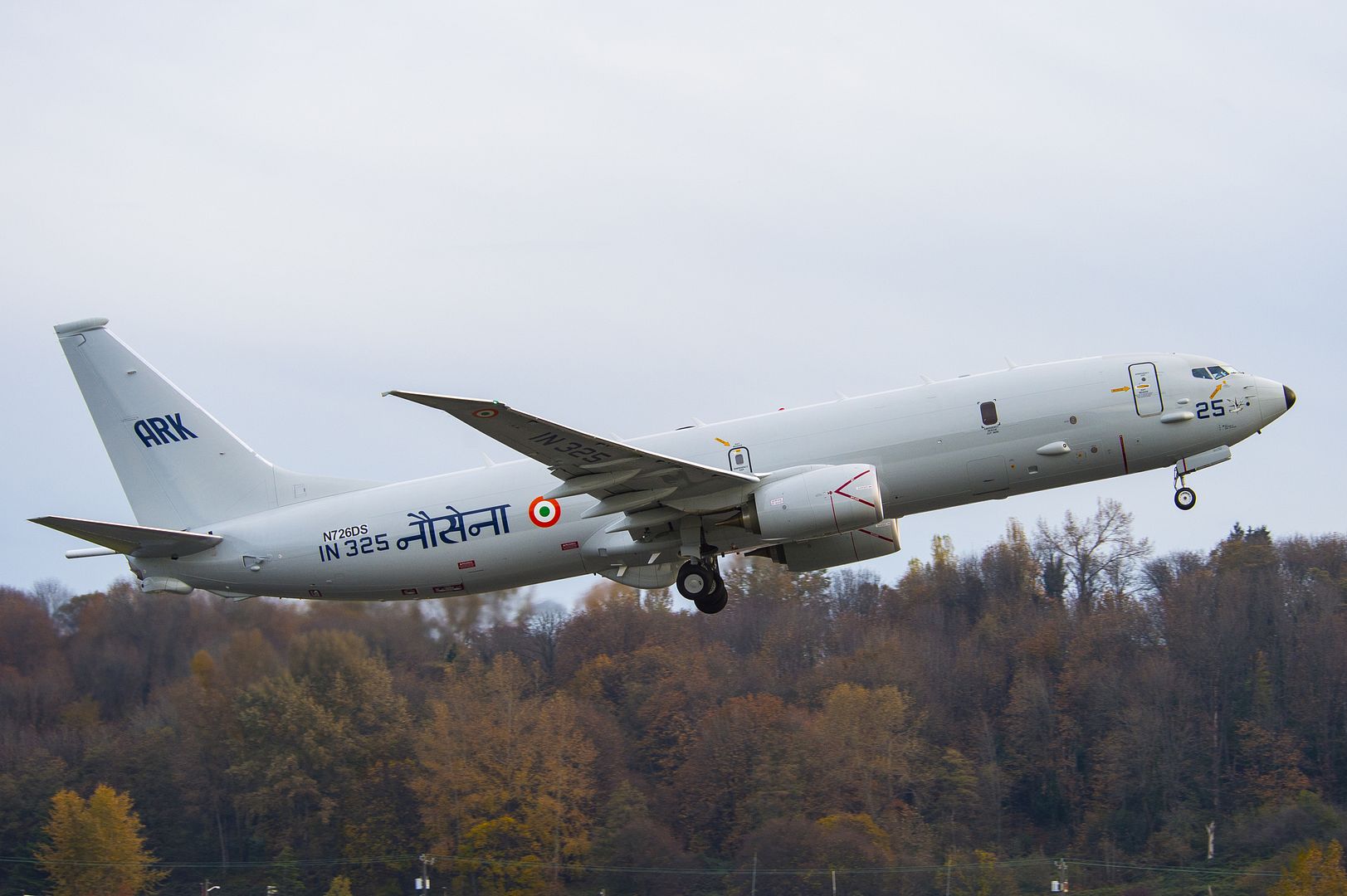
Photo credit: Boeing
26 November 2014 Press Release
Vietnam?s VietJetAir has celebrated the delivery of its first A320 ordered directly from Airbus at a special ceremony in Toulouse today. The event was attended by top management from the airline, including Vice Chairwoman Nguyen Thi Phuong Thao and Managing Director Luu Duc Khanhm, and witnessed by Vietnam?s Deputy Minister of Transport Pham Quy Tieu.
The delivery marks the start of a major expansion at the airline which will see it acquire up to 100 A320 Family aircraft, including 63 on firm order with Airbus. In addition, the airline has purchase rights with Airbus for another 30 aircraft and will lease seven more from third party lessors.
?The A320 has proven to be extremely efficient in service with VietJetAir and is a favourite with our passengers,? said Luu Duc Khanh, Managing Director, VietJetAir. ?Based on this experience, we look forward to developing our business across the Asia-Pacific region, with the most economic and comfortable aircraft. We are delighted to celebrate this delivery as we embark on a new phase in our expansion.?
"This ceremony marks a new exciting milestone in our relationship with VietJetAir and with Vietnam, one of the fastest-growing markets in the world,? said John Leahy, Airbus Chief Operating Officer Customers. ?We are confident that the reliable and proven A320 Family, combining the lowest operating costs with the highest levels of passenger comfort, will play a key role in enabling VietJetAir to fly to even greater heights.?
VietJetAir first took to the skies in 2011 and is the first private airline in Vietnam to operate domestic and international flights. Today, the carrier operates a fleet of 17 leased A320s on a network covering Vietnam and a growing number of destinations across Asia. The 63 aircraft already on firm order with Airbus comprise 14 A320ceo, seven A321ceo and 42 A320neo.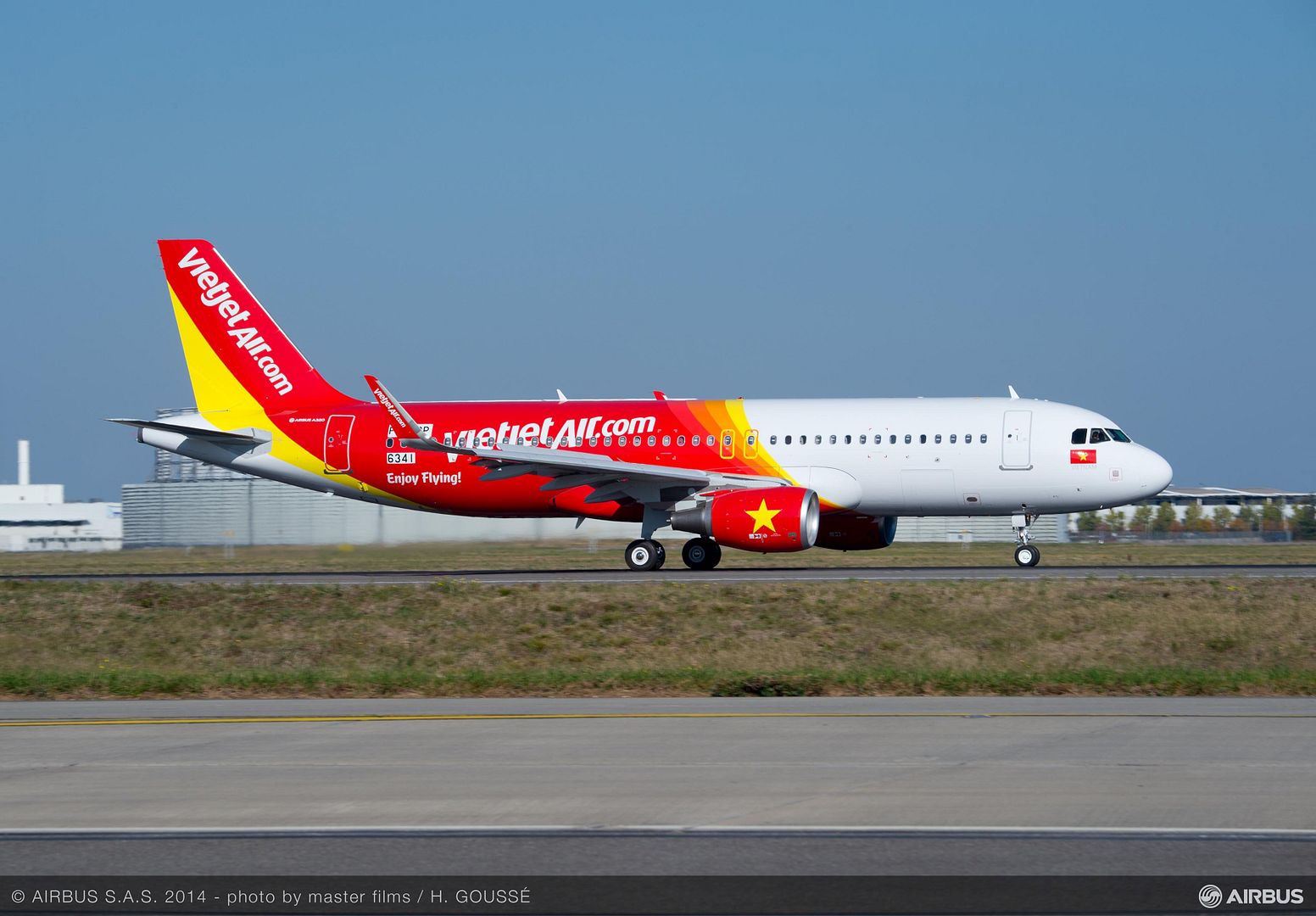
Post a reply
- Go to Previous topic
- Go to Next topic
- Go to Welcome
- Go to Introduce Yourself
- Go to General Discussion
- Go to Screenshots, Images and Videos
- Go to Off topic
- Go to Works in Progress
- Go to Skinning Tips / Tutorials
- Go to Skin Requests
- Go to IJAAF Library
- Go to Luftwaffe Library
- Go to RAF Library
- Go to USAAF / USN Library
- Go to Misc Library
- Go to The Ops Room
- Go to Made in Germany
- Go to Campaigns and Missions
- Go to Works in Progress
- Go to Juri's Air-Raid Shelter
- Go to Campaigns and Missions
- Go to Works in Progress
- Go to Skinpacks
- Go to External Projects Discussion
- Go to Books & Resources
